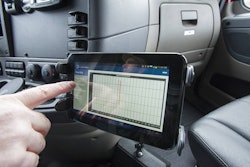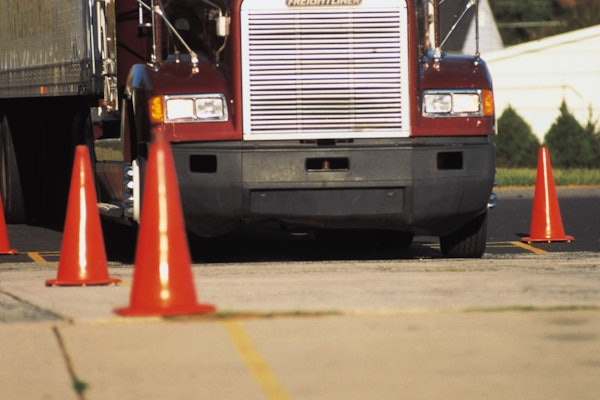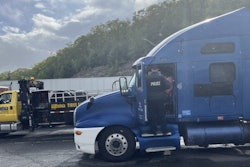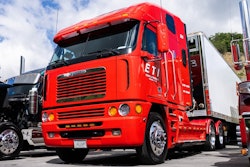Previously in this series: Covering your tracks: The brave new world of ‘freight visibility’
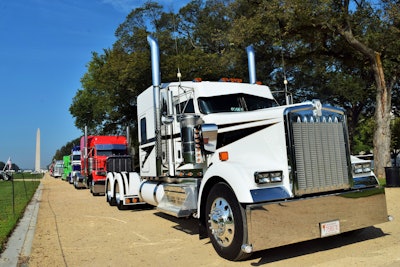 “I hate the ELD, I hate that it’s mandated,” says small-fleet owner-operator Rob Hallahan, but I “like the utilities that come with it.” His fleet’s flagship rig, this W900L, was one of 50 trucks parked on the National Mall for the “That’s a Big 10-4 on D.C.” protest event in October.
“I hate the ELD, I hate that it’s mandated,” says small-fleet owner-operator Rob Hallahan, but I “like the utilities that come with it.” His fleet’s flagship rig, this W900L, was one of 50 trucks parked on the National Mall for the “That’s a Big 10-4 on D.C.” protest event in October.In April, owner-operator Rob Hallahan, based in La Crosse, Wisconsin, sold his “Big Orange” 2006 Kenworth W9 to a fellow owner-operator and invested further in the relationship by leasing the truck and its new owner under his authority. Hallahan bought, in turn, the pictured 2019 Kenworth W900L.
Hallahan still opposes being required to use ELDs. He’s more ambivalent about the technology, in part for the tracking capabilities the KeepTruckin ELD and simple small fleet management software have given him in his new role as manager of a fleet that includes his truck and four others.
In October, as Hurricane Michael bore down on the Florida Panhandle, Hallahan was at home in La Crosse, looking at his computer’s KeepTruckin display of his owner-operators’ locations. One was on his way to deliver in Ocala, Florida, “straight into the hurricane,” Hallahan said.
The driver’s cell signal was down, but the KeepTruckin ELD unit remained connected. “The broker wanted to know where he was and if he was going to make it. I could pinpoint exactly where he was, and I would never have been able to do that before.”

Colorado-based small fleet owner-operator Wade Spencer also has found tracking benefits from in-cab GPS. It hasn’t been directly via the Blue Ink Technology ELDs he’s using for his four-truck company but through Fleetmatics trackers he’d installed previously, in part to enable location sharing with a regular broker customer who’d requested it.
Spencer set the Fleetmatics devices to send daily “driver locations at 6 a.m. and again at 6 p.m.” to the broker. On the rare high-value load, an occasion when his broker may need to know more, Spencer says, “I’ve given her login access” to his administrator account.
Still, it happens that an occasional broker actually requests his drivers use Macropoint to track their phones via the Macropoint app along the progress of the load. “Before I allowed my drivers to do it, I got in touch with someone at Macropoint” for security assurances, Spencer says. Today, he lauds the simplicity of the program when managed through a smartphone app with clear driver control of when the tracking begins and ends. “It gives the brokers an update every 20 to 30 minutes or so. It’s very small, doesn’t use hardly any data at all.”
That means on certain loads, Spencer’s operators haul with three separate devices recording location: Macropoint, Blue Ink’s ELD and Fleetmatics.
Next in this series: Simplified tracking for small brokers and owner-ops





